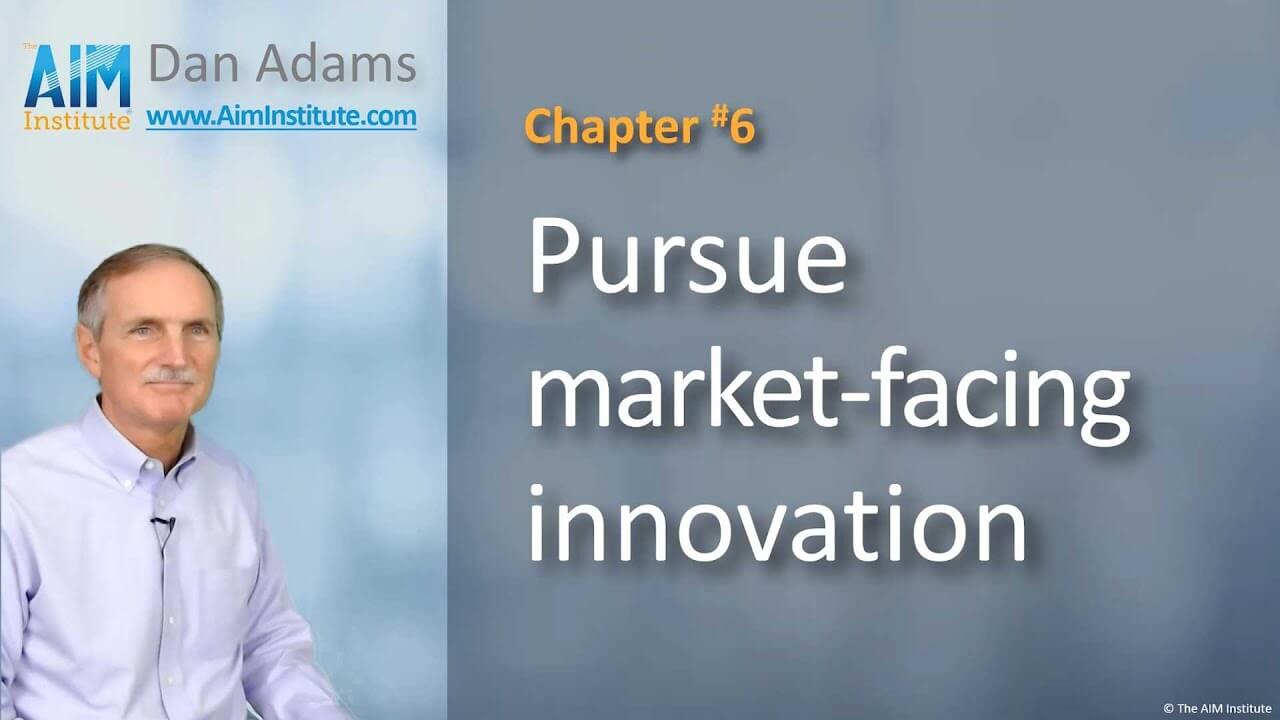B2B Organic Growth Series: Chapter #6
Pursue market-facing innovation

Subscribe to the series. Get 50 free videos, sent daily or weekly.
Research shows exceptional companies pursue “better before cheaper” and “revenue before cost.” Since only customers decide what is “better,” your innovation must be driven by the market.
b2bgrowth.video/6 Video length [2:09]
Transcript of Chapter 6
In the last video, I said you should abandon the goal many companies pledge allegiance to: “Maximize shareholder wealth.” Instead, make this your goal: “Understand and meet customer needs better than others.” A short-hand description of this is “market-facing innovation.”
This is consistent with Peter Drucker’s point: “The business enterprise has two and only two basic functions… Marketing and Innovation. All the rest are costs.”
The innovation part is probably obvious to you. But why “marketing”? Well, there’s early-stage marketing—understanding what customers want… and late-stage marketing—promoting your new product. It’s all about market-facing innovation.
But who says this is right? I mean, where is the evidence? Check out The Three Rules by Raynor and Ahmed. They examined over 25,000 companies over several decades to isolate the exceptional performers. These companies followed three rules.
First, better before cheaper. So if someone on your team thinks the path to success is becoming the low-cost producer… be wary. Second, revenue before cost. If your primary focus is on driving down costs… you should be nervous.
The third rule? There are no other rules. Now the authors weren’t trying to be “cute” here. They found that while there are some unique ways to win, there are only two common rules for success.
Throughout these videos, we will target market-facing innovation to drive your profitable organic growth. This is “better before cheaper”… creating something of value your customers cannot get elsewhere. And this is “revenue before cost”… a fixation by your entire organization on the right kind of growth.
In the next chapter, we’ll see why this isn’t just a good idea. It’s a timely idea.
Comments